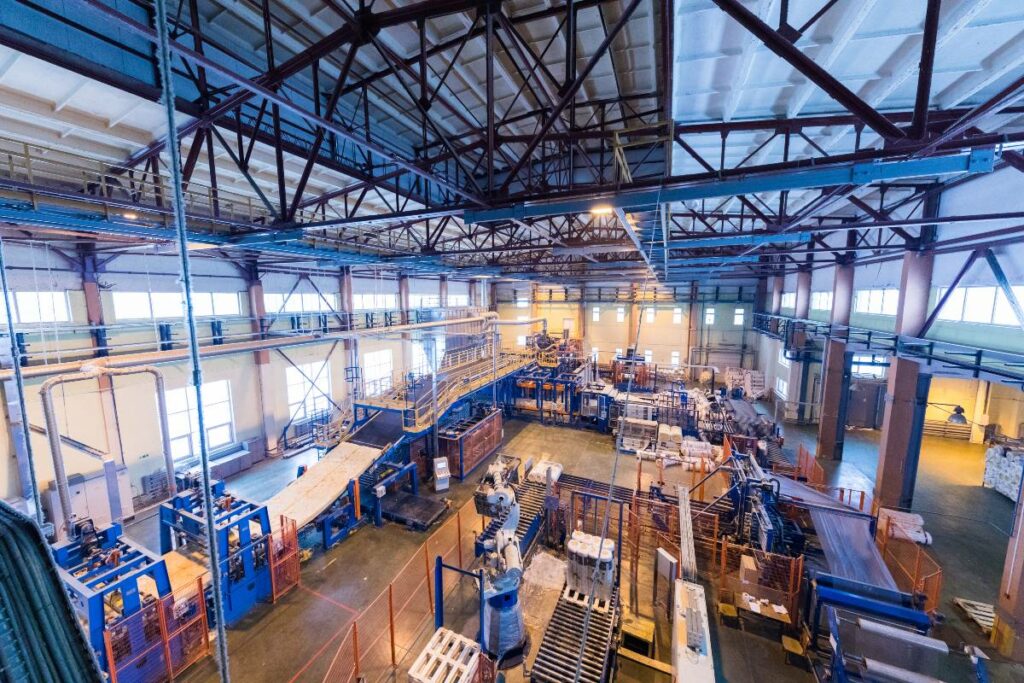The Seller’s Market Conundrum
In the current Southern California industrial real estate market, buyers are facing a significant hurdle: a scarcity of motivated sellers. Despite a recent dip in rents in some areas, the region remains highly sought-after, leading to fierce competition for the limited available properties.
During Bisnow’s Southern California Industrial Conference, Rexford Industrial Realty’s Chief Investment Officer, Patrick Schlehuber, emphasized the difficulty in finding sellers, stating that it is their “biggest challenge.” Many sellers, having witnessed the peak prices of recent years, are struggling to adjust their expectations to the current market conditions, making them reluctant to part with their properties.
This hesitancy has led to a shortage of deals, contrary to the expectations of some buyers who anticipated a wave of opportunities. While there are always sellers motivated by upcoming maturity dates, the anticipated flood of deals has not materialized. Ares Management’s Managing Director, Gregg Boehm, noted that there hasn’t been a significant number of distressed industrial properties, as banks have found ways to work with their borrowers, recognizing the strength of the sector.
Buyers in the Southern California industrial market are not only grappling with the challenge of finding deals but also contending with the high cost of capital and, in some areas, increasing regulations. These factors have created additional hurdles for those looking to develop, acquire, and lease industrial properties in the region.
The Southern California industrial real estate market has consistently proven its resilience and strength, even amidst a slowing economy and evolving market conditions. Despite the hurdles, owners and developers in the region are firmly holding onto their properties, demonstrating a strong conviction in the market’s long-term potential.

Navigating the Seller’s Market
One of the most significant challenges for buyers in the current market is finding motivated sellers. Patrick Schlehuber, Chief Investment Officer of Rexford Industrial Realty, highlighted this issue during Bisnow’s Southern California Industrial Conference, stating, “We’re struggling to find sellers, frankly — that’s our biggest challenge.”
Many sellers are still clinging to the peak prices witnessed in recent years, making it challenging for them to adjust their expectations to align with the current market reality. This hesitance to sell has resulted in a scarcity of deals, despite some buyers anticipating a surge of opportunities.
The Role of Banks in Stabilizing the Market
Despite the difficulties faced by sellers, distressed industrial properties have been relatively scarce. Gregg Boehm, Managing Director at Ares Management, observed that “banks have figured out a way to play ball with their borrowers, knowing just how great the sector is, and so we haven’t quite seen as many deals as we had hoped for.”
The support provided by banks has been instrumental in preventing a deluge of distressed properties from entering the market. Banks recognize the inherent strength and potential of the industrial sector, which has led to their willingness to work with borrowers to find mutually beneficial solutions.
Navigating the Challenges and Seizing Opportunities
While the Southern California industrial market remains attractive, it is not without its challenges. The high cost of capital, increasing regulations in certain areas, and a slight decline in rents in the Inland Empire have all contributed to a more intricate landscape for those seeking to develop, acquire, and lease industrial properties in the region.
The Rising Star: Kern County
In stark contrast to the challenges encountered in other parts of Southern California, Kern County has emerged as a shining example of opportunity for industrial real estate. Wesley McDonald, Senior Vice President at ASU Commercial, emphasized the county’s potential, stating, “We’re in a unique position right now to take down land in Kern County. We have thousands of acres.”
Kern County’s “pro-business” environment and streamlined regulatory processes have made it an enticing destination for developers and investors. Furthermore, farmers who were previously hesitant to sell their agricultural properties are now rezoning them to increase their appeal for redevelopment, creating new avenues for growth.

The Enduring Appeal of Port-Adjacent Markets
Despite the looming supply glut in certain areas, panelists at the conference remained optimistic about the long-term prospects of port-adjacent markets like the Inland Empire. The close proximity to the two busiest ports in the country makes these markets highly sought-after for businesses aiming to optimize their shipping costs.
Gregg Boehm underscored this point, noting that “this is really the most inexpensive place in terms of shipping a product here, especially considering most of [the products] are coming from Asia.” Even companies that have secured space in other states are shipping their products to the Inland Empire and then trucking them back to their final destinations.
The Interplay of Rents and Occupier Demand
As rents in the Southern California industrial market continue to stabilize, experts anticipate that occupiers who may have relocated to other states will likely desire a return to the LA area. The region’s long-term appeal, coupled with the efficiency of being situated near major ports, is expected to drive demand once rents reach a more equilibrium level.
The Importance of Adaptability and Expert Guidance
As the Southern California industrial real estate market continues to evolve, it is crucial for stakeholders to remain adaptable and well-informed. Seeking expert guidance can be invaluable in navigating the complexities of the market and making sound investment decisions.
This is where the expertise of professionals like Mike Tolj comes into play. With over 18 years of experience in the commercial real estate industry, Mike specializes in representing business owners and landlords in both leasing and sales transactions. His swift and efficient approach to deal-making, coupled with his unwavering commitment to client satisfaction, has earned him a stellar reputation in the industry.
Mike’s track record speaks for itself, with numerous successful transactions facilitated for his clients. His deep understanding of the market, combined with his passion for helping business owners and landlords achieve their real estate goals, makes him an invaluable resource for those looking to navigate the Southern California industrial real estate landscape.
Conclusion
Despite the challenges posed by a slowing market and shifting conditions, the Southern California industrial real estate sector remains a bastion of strength for owners and developers. The reluctance of sellers to part with their properties, the support from banks, and the enduring appeal of port-adjacent markets all contribute to a positive long-term outlook for the region.
As the market continues to evolve, it is essential for those involved in the industrial real estate sector to stay informed, adapt to the changing landscape, and seek expert guidance when needed. For those looking to achieve their industrial real estate goals in Southern California, scheduling a consultation with Mike Tolj can be a game-changer.
With his extensive experience, deep market knowledge, and commitment to client success, Mike Tolj is well-equipped to help business owners, landlords, and investors navigate the complexities of the Southern California industrial real estate market. Whether you’re looking to lease, buy, or sell industrial property, Mike’s expertise can help you make informed decisions and achieve your desired outcomes.
To learn more about how Mike Tolj can help you succeed in the Southern California industrial real estate market, schedule a consultation today. With his guidance and support, you can confidently navigate the challenges and seize the opportunities that lie ahead.




